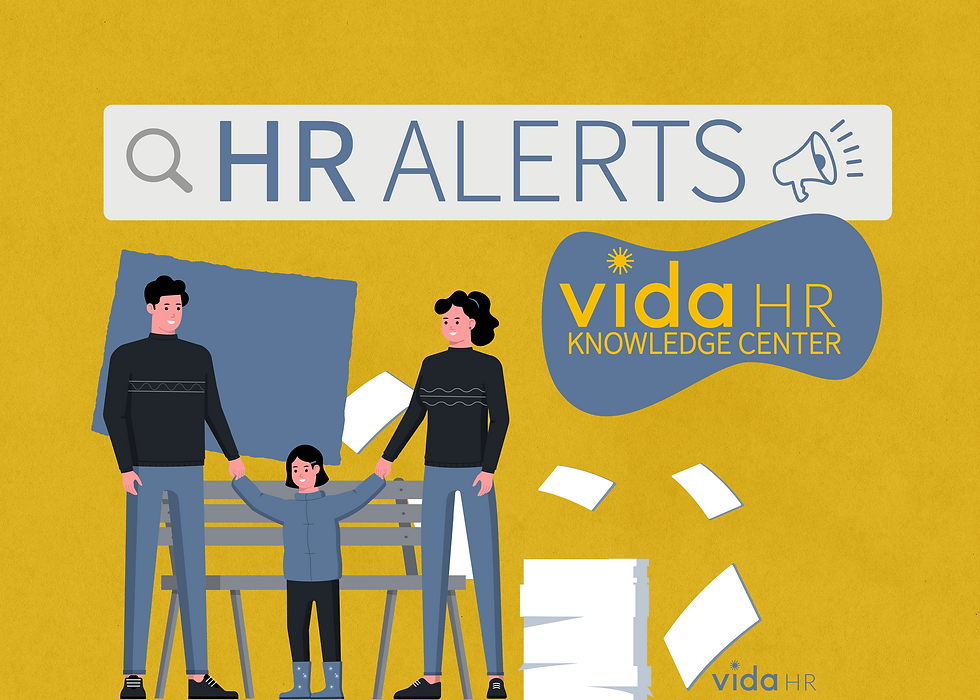The Negative Effects of Digital Clutter: Your Brain on Notifications
- Regina Dyerly, SHRBP, PHR

- Jul 29
- 4 min read

The Negative Effects of Digital Clutter: Your Brain on Notifications
By: Regina Dyerly, SHRBP, PHR | Partner / Chief Operating Officer (COO)
Ever sit down to finish one simple task, then find yourself answering a Teams message, checking your email, Googling something unrelated, and forgetting what you were doing in the first place?
You are not alone. Our digital environments have become so noisy that uninterrupted focus feels almost impossible.
The culprit? Digital clutter, the silent productivity killer that follows us everywhere.
This is not about deleting your apps or going off the grid. This is about creating space to think clearly, work intentionally, and feel less overwhelmed by your digital life.
Why It Matters
Let’s start with what we know:
According to RescueTime, the average worker checks email or messaging platforms every 6 minutes.
Researchers at UC Irvine found it takes 23 minutes and 15 seconds to return to a task after an interruption.
Most professionals toggle between tabs or tasks more than 300 times a day.
In Deloitte’s Connected Consumer Survey, 32% of workers reported feeling mentally drained by the number of digital tools they’re expected to use daily.
In short, our brains are on overload, and our digital environments are not helping.

What Digital Clutter Really Looks Like
It is not just about too many emails or too many apps. It is:
The 17 tabs open “just in case.”
The unread badge that never dips below 100.
The constant hum of background Slack messages or Teams chats.
Files saved to your desktop “for now” that never move.
Endless toggling between platforms for a single task.
This digital noise eats away at your attention, even when you are not actively engaging with it.
3 Digital Declutter Tactics That Actually Work

1. Batch Your Notifications (Don’t Disable Them All)
Telling people to “turn off all notifications” sounds good in theory but is not practical for many roles.
Instead, batch them:
Set notification permissions to “deliver quietly” or group them to appear only at scheduled times.
Designate two or three times per day to check communication platforms rather than reacting in real-time.
You are not being unresponsive. You are being more intentional.

2. Give Your Workspace a Reset Button
Every Friday (or whatever day works for you), build in 15 minutes to:
Close every tab.
Move stray desktop files to a designated folder.
Unsubscribe from 1–2 emails you never read.
Reorder bookmarks or quick links by relevance to your current work.
This small act creates visual calm, and mental clarity to start the next week.

3. Use Fewer Tools, Better
If your workflow involves bouncing between 5 platforms for a simple task, the problem is not you, it is the stack. Have a team conversation:
Which tools do we really need?
Where are we duplicating effort?
Can we consolidate platforms or agree on shared norms (like “Don’t Teams and email me about the same thing”)?
Digital decluttering is not always a solo project. Sometimes it is a cultural reset.
Bonus: The Science of Less
Studies in neuroscience suggest that cognitive load, the mental effort required to process information, is significantly higher when people are forced to switch between multiple digital inputs. The more cluttered the digital space, the more stressed and fatigued the brain becomes.
A 2020 study in the journal Nature Communications found that:
Digital overload can disrupt the brain’s ability to consolidate information, leading to weaker memory recall and more error-prone decision-making, especially under multitasking conditions.
And it is not just active use,
a 2017 study published in the Journal of the Association for Consumer Research found that
Simply having a smartphone visible (even when not in use) significantly reduced cognitive capacity, as the brain works to resist the urge to check it.

In short, the mental fatigue you feel after a “low-effort” day online is very real.
A Final Thought
You do not need to delete every app or plan a digital detox retreat (unless you want to). You just need a simple plan.
A little less noise. A little more breathing room. That is the real goal of digital decluttering.
How to Batch Notifications in Outlook (Step-by-Step)
1. Turn on Focused Inbox (Desktop or Web)
This feature filters emails into “Focused” (important) and “Other” (less important), helping you process emails in batches.
Outlook Desktop App:
Click the View tab.
Click Show Focused Inbox.
Outlook will now sort messages into Focused and Other tabs.
Outlook Web:
Click the Settings gear in the top right.
Toggle Focused Inbox to On.
You can train it over time by right-clicking emails and selecting “Move to Focused” or “Move to Other”.
2. Set ‘Do Not Disturb’ or Quiet Hours (Windows Notification Settings)
This prevents desktop alerts while still allowing you to check Outlook at your chosen times.
Windows 10/11:
Click Start → type Focus Assist and press Enter.
Under Focus Assist Settings, select “Alarms only” or “Priority only”.
Under Automatic Rules, set your work hours or custom quiet periods.
Click Customize your priority list to allow only critical Outlook alerts.
3. Schedule Email Checks (Behavioral Tip)
Even with notifications batched, the habit of checking email constantly is tough to break. Try:
Blocking 3–4 email check times on your calendar (e.g., 9 AM, 12PM, 2 PM, 4 PM).
Turning off new mail sound notifications to reduce the urge to check immediately.
Optional: Mobile Outlook App Notification Controls
If you're using Outlook on your phone:
Open the Outlook mobile app.
Tap your profile icon (top left) → tap the gear ⚙️ at the bottom.
Under your account, tap Notifications.
Choose:
Focused only – only get alerts for emails in the Focused tab
None – no alerts, check on your own
All – every new message triggers an alert (not recommended for batching)
The Negative Effects of Digital Clutter




Comments